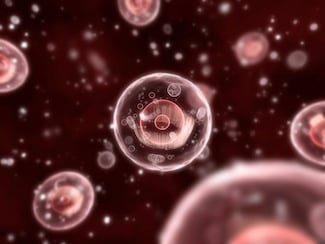The Relationship between Muscle Oxygen and Mitochondrial Function
 Grasping the principle of mitochondrial function is central to understanding the role of muscle oxygen in bioenergetics as a whole. Despite the existence of several studies exemplifying mitochondrial function in oxidative metabolism, there is still much confusion about the relationship between mitochondrial function in muscle oxygen.
Grasping the principle of mitochondrial function is central to understanding the role of muscle oxygen in bioenergetics as a whole. Despite the existence of several studies exemplifying mitochondrial function in oxidative metabolism, there is still much confusion about the relationship between mitochondrial function in muscle oxygen.
During exercise, energy in the skeletal muscle can increase up to 400 times that of the muscle at rest; similarly, muscle oxygen consumption increases more than 100 times during exercise. Comparative studies have discovered a correlation between maximal oxygen consumption (VO2 max) and whole body mitochondrial content. This suggests that the total quantity of mitochondrial respiratory enzymes in cells determines the oxidative capacity of muscles.
Studies have shown that the mitochondrial oxidative capacity is far higher than that of the cardiovascular system. The most widely accepted theory for this is that the cardiovascular system limits maximal oxygen consumption during short, intense exercise. Therefore, an increase in the quantity of mitochondria in the muscle tissue, developed through training, is important for athletes who want to improve their endurance capacity and fatigue resistance.
Evidence suggests that maximal mitochondrial oxidative power (V max) in the skeletal muscle is present in excess relative to what is required during exercise with large muscle groups. Even so, there is a further increase in mitochondrial density during endurance training. While this has only a small influence on the whole body maximal oxygen utilization, it plays a major role in reducing metabolic perturbations and increasing endurance during submaximal exercise.
Observations have found that mitochondrial enzyme activity and mitochondrial volume are both related to whole body maximal oxygen uptake. Tonkonogi and Sahlin from the Department of Physiology and Pharmacology at the Karolinska Institutet and Stockholm University College of Sport Science, respectively, discovered that ADP-stimulated mitochondrial respiration is relative to muscle CS activity (a marker of mitochondrial mass) in both trained and untrained subjects. This suggests that an increase in mitochondrial respiration per muscle weight is due to the expansion of mitochondrial mass and not changes to a particular activity.
It is generally accepted that endurance training leads to enhanced performance and delayed fatigue. These physiological adaptations are at least partly due to increases in mitochondrial content and muscle oxidative capacity, which together conspire to enhance muscle aerobic power output.
Follow @MoxyMonitor

